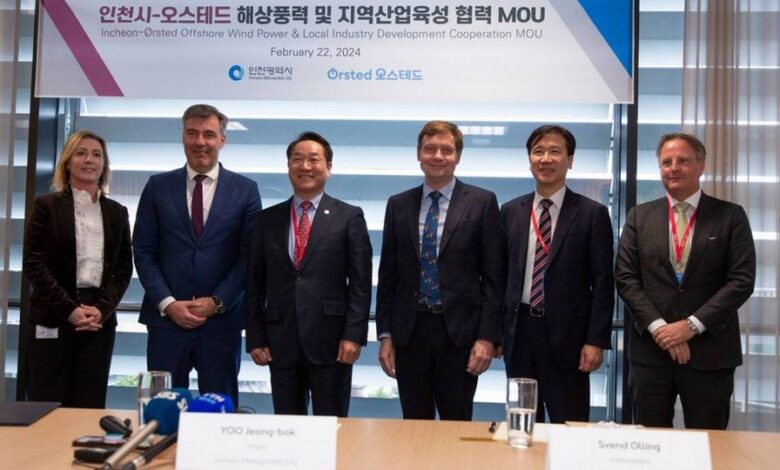Ørsted to kickstart South Korean offshore industry — EnergyWatch

Ørsted wants to help build the offshore wind industry in South Korea. Or more precisely in Incheon City, where the Danish energy company was awarded an Electricity Business License (EBL) in November, giving it exclusive rights to develop a 1.6 GW offshore wind farm around 70 km off the coast of the port city. Ørsted has signed a memorandum of understanding with Incheon City.
”Ørsted will work closely with the City of Incheon to launch a new offshore wind industry and boost local economic development in the region. We have a strong track record working with Korean suppliers in our global portfolio over the past decade,” says Chairman of the Board Thomas Thune Andersen in a statement, adding:
”We’ll build on this legacy of collaboration with our Incheon project, which will lead the way for a thriving offshore wind industry by generating reliable renewable energy, attracting long-term investments, and creating jobs.”
On the face of it, such an announcement might make investors nervous. Many of Ørsted’s financial woes stem from the fact that it invested heavily in the establishment of an offshore wind industry in New Jersey. Investments that have been costly, as the Ocean Wind project ended up falling apart.
However, Ørsted confirms to Stockwaveinsights that the declaration of intent does not include any financial commitments.
Furthermore, the Incheon project will not be built anytime soon. Ørsted must first conduct and receive approval for environmental and feasibility studies before the project can be bid into the Korean offshore wind tender. If all goes well, Ørsted hopes to have the farm ready ”in the early 2030s”.
Although the letter of intent does not entail any binding promises, it is a testament to Ørsted’s continued interest in South Korea. In connection with last month’s strategy update, both the level of ambition for the overall expansion and the number of countries the Danish market leader will focus on in the future were reduced.
Among other things, the development in Japan was given lower priority. The same was generally true for floating wind, which is expected to dominate the Korean market as well. At the Incheon project, however, the sea depth is only around 25 meters, making it an obvious choice for a fixed-bottom installation.
(Translated using DeepL with additional editing by Catherine Brett)
Source link



